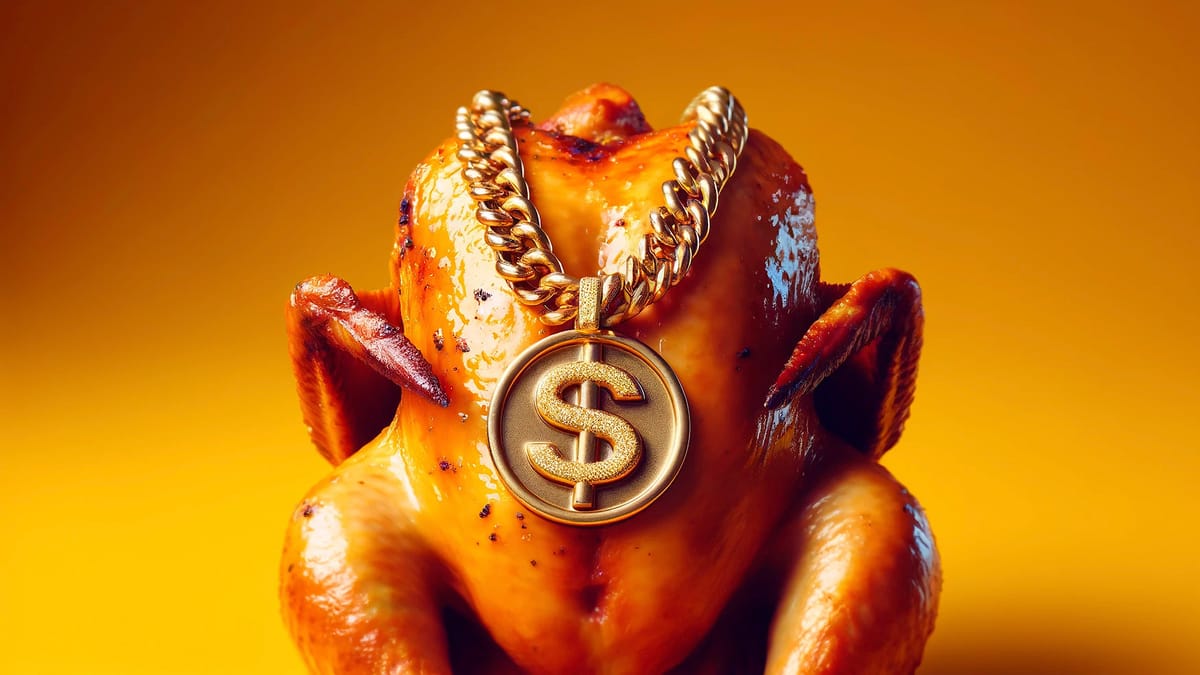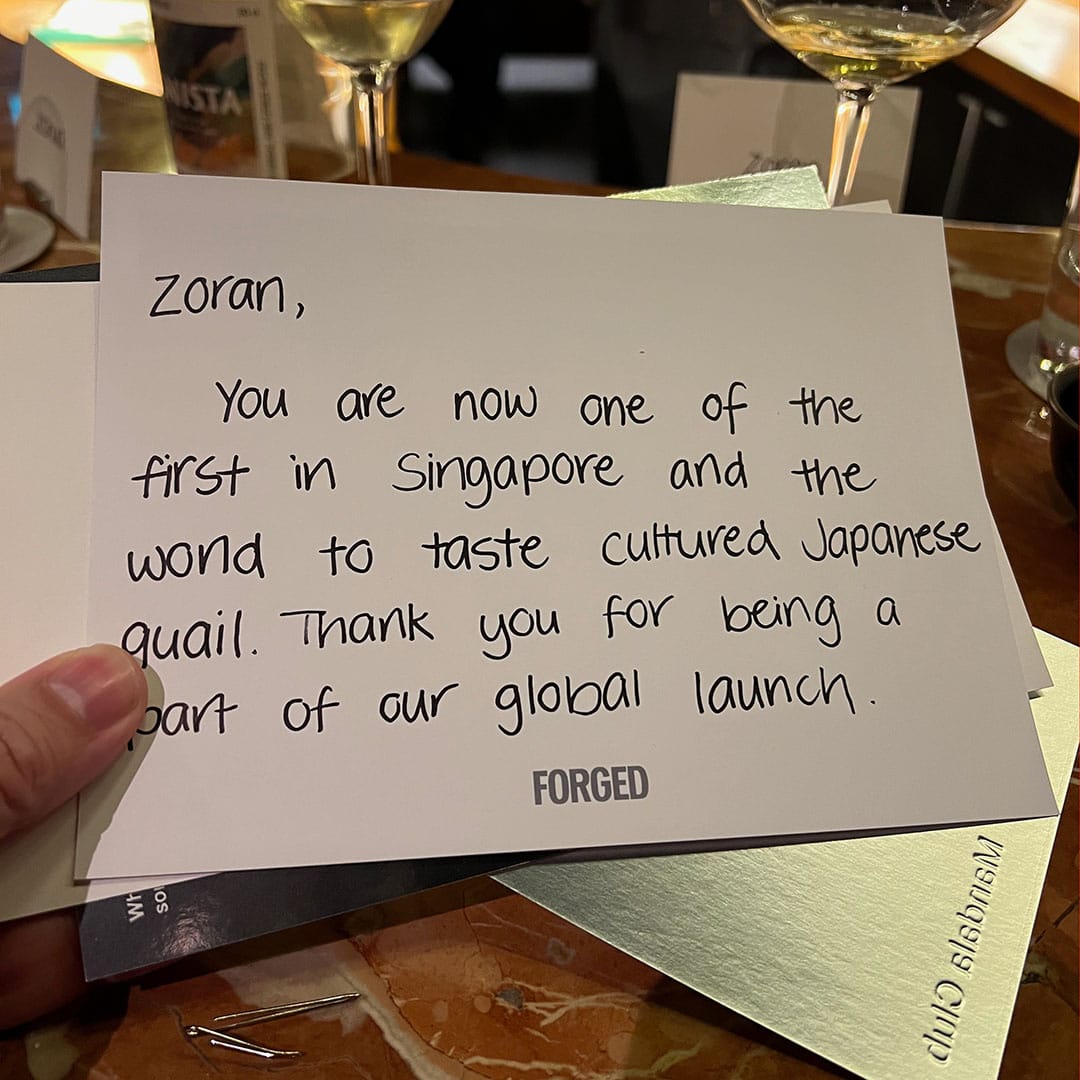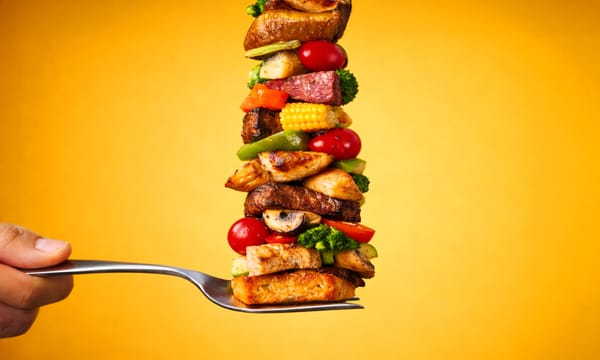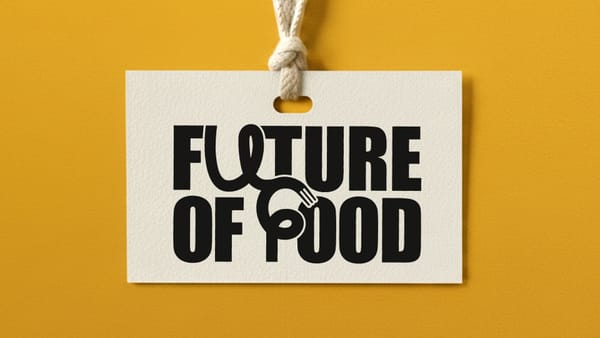UNSTUCK 008: If You Want Change, Start With The Bling
Why building desire will get you a lot more growth than achieving parity.

Too many sustainable food brands are getting stuck fighting a commodity battle because they’re too chicken to charge a premium. But history tells us mass category change starts with highly desirable propositions, exactly as Vow is doing with their first launch.
The secrets to the future often lie in the past. Food history shows us categories start life with premium, highly desirable, often elusive products before they find their way into our everyday life through crisp packets (truffles), grab n’ go lunches (sushi) or middle class children’s snacks (hummus), to cite recent examples.
Interestingly, the origins of these can come from globalization of common foods: raw fish has been eaten by Japanese in the form of sushi for centuries (an affordable way of preserving fish in fermented rice), but took hold in the United States in the 1960s as a fashionable option, and started it’s mainstream journey in 1996 when the first pre-packaged sushi appeared in supermarkets.
Or they come from finding mass production and distribution techniques for previously genuinely scarce items. There has been a century of mystique around truffles and the dark art of hunting for them in the magical forests of Périgord, Alba or Istria with pigs or specially trained dogs in tow. Of course there is no way a foraged ingredient that costs $5,000 per kg can find its way into a $5 Truffle Whopper Meal, but a synthetic imitation gives it an illusion of premiumness.
Whether products are born into the global market up or down, within almost every category today we find layers of premiumisation. There’s debate as to the origins of the humble burger, but no question today it’s firmly a mass market food with 50 billion burgers eaten in America every year. Consumers can choose from a $4 Big Mac through to the most expensive burger in the world at De Daltons in the Netherlands at €5,000, with many options in between.
It’s therefore baffling that the alternative protein industry is obsessed with price and the ultimate success is commoditization. Fuelled by misguided research that continues to inform ‘price is the key issue to solve’, all attention goes to driving down the cost curve, rather than building a highly desirable category that consumers see value in paying for, as the start of the journey to mass market adoption.
IMPOSSIBLE: How to lose your cool in two easy steps

Impossible Foods had the right idea at the start. It launched in the summer of 2016 in the US with $40 burgers in cool west and east coast hang-outs where those in-the-know were the first to try and the cool craze was building, not least thanks to a video of Momofuku’s Chef David Chang that went viral.
In 2018 it launched in Hong Kong where Impossible collaborated with two of the city’s leading chefs, and by 2021 it could be found as a listed ‘sustainable supplier’ on the menu at the Landmark Mandarin Oriental hotel, alongside Chicken, Beef, Seafood and Eggs (exactly the animal protein company the brand wanted to be keeping).
Perhaps forgetting they were food, not tech, and fuelled by the lure of the rapid mass market expansion of tech industries, the brand quickly tried to be everything to everyone. In the summer of 2019 in the US we had the Impossible Whopper, a mere three years after launch. The brand is now wholly about the mass meat eaters of the US, which as we wrote about in our perspective on the Impossible re-brand, is a consumer target leap too far, too soon, along the adoption curve.
FORGED by Vow: A breath of strategic fresh air

Rather than seeing the lack of branding in animal protein as a reason to default to a battle of commodities, George Peppou, founder of Vow, and his team saw an opportunity to introduce desirability to the category. The launch of Forged by Vow and their cultured quail at the Mandala Club, Singapore, is the first luxurious salvo of this strategy.
For sure, like their cultivated counterparts, there is no option due to initial limited supply to launch in this exclusive way. But the difference here is Forged isn’t just saying “come and try and world’s first cultured quail”, it is an ongoing brand promise of “a dining experience like no other” showing they know exactly who their target audience are: high-end foodies seeking unique experiences.
The fact the seven course omakase menu was not vegan, but featured their quail parfait spread on A5 Wagyu beef, served with caviar bumps, and paired with generous pours of carefully chosen sakes, shows they want to be integrated into food culture, not fight a cruelty-free battle with animal agriculture. They are launching premium and staying premium (in the future you may try Forged if you travel first class, or shop in a luxury food hall).
The intent of the Vow team doesn’t stop at decadence. They’re already thinking about building a house of brands with different levels of premiumisation; correctly obsessed with finding opportunity spaces where consumer motivations can be met with innovative propositions. Think in terms of nutrition such as definitive post work-out proteins, mince with the taste of beef and omega-3s of salmon, and more. Whether those propositions are crafted from an animal, an animal cell, or a plant doesn’t even need to come into question.
Whether one company can crack a model that affords them to build multiple brands remains to be seen, but we certainly love how they are thinking. The point, however, is that every company in the space needs to be focused on creating a vibrant category with multiple layers of premiumness so desirability is built in alongside future mass market options. Obsess over your target, meet their needs with unique propositions, and have the courage to charge for it.
In other words, if you want change, start with the bling.






